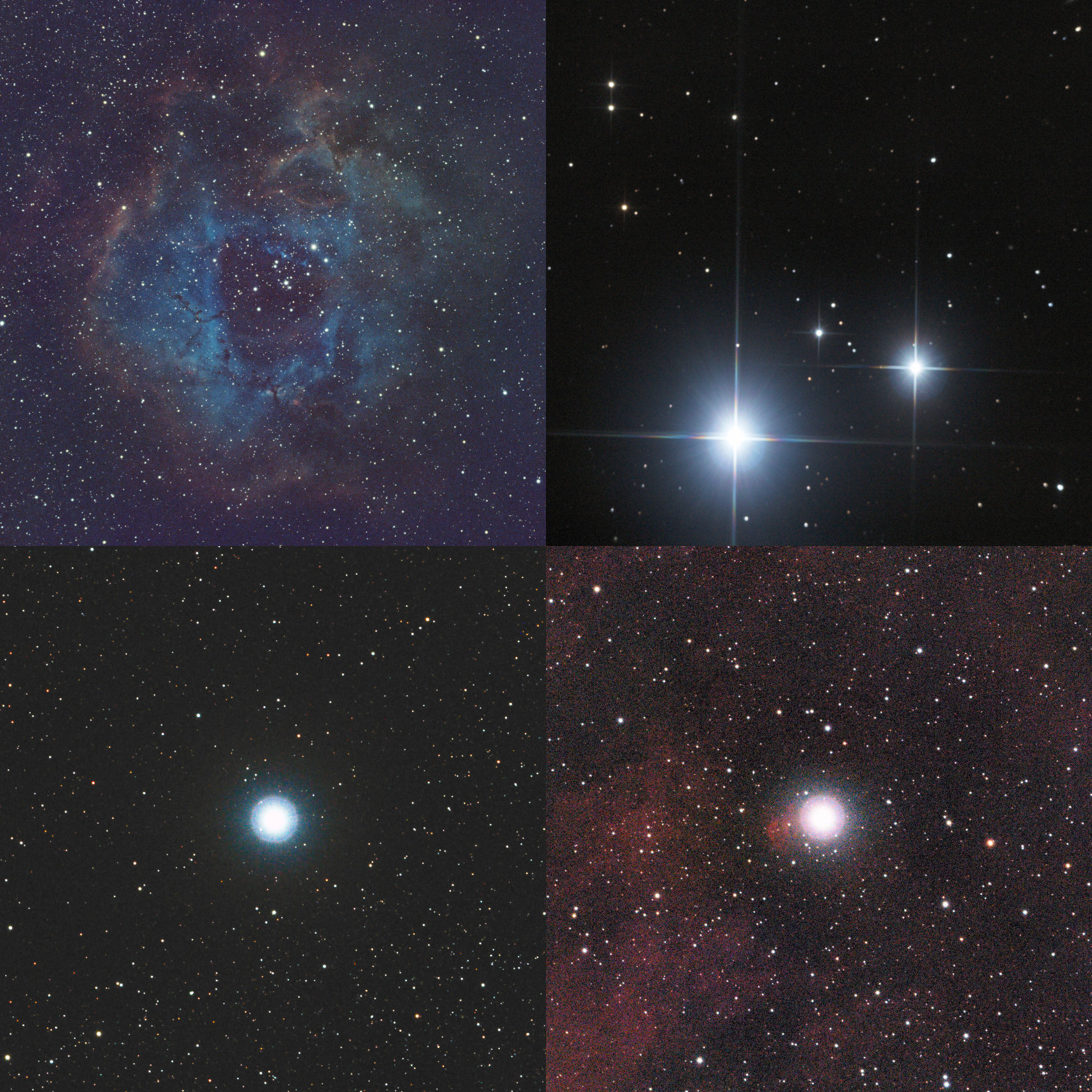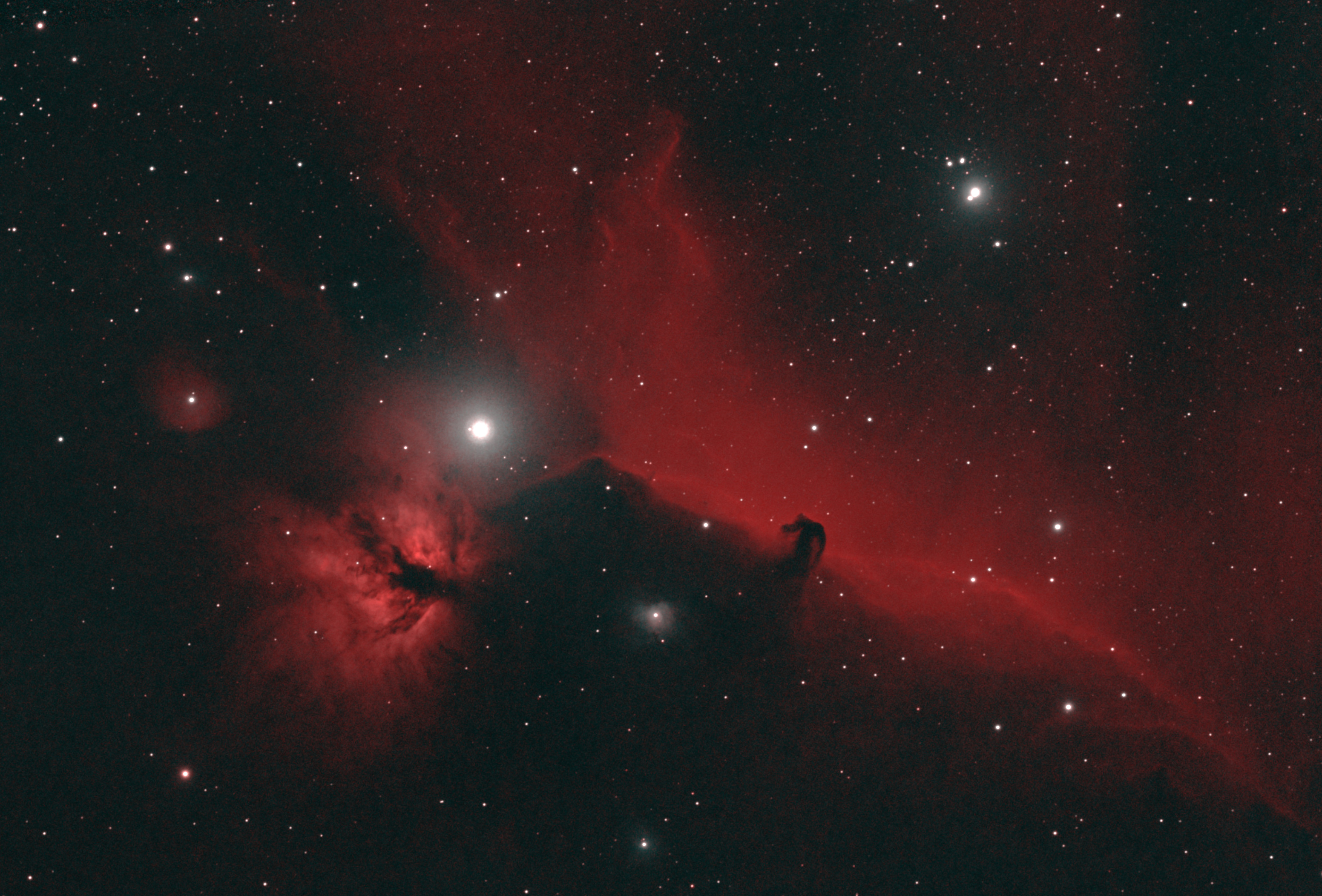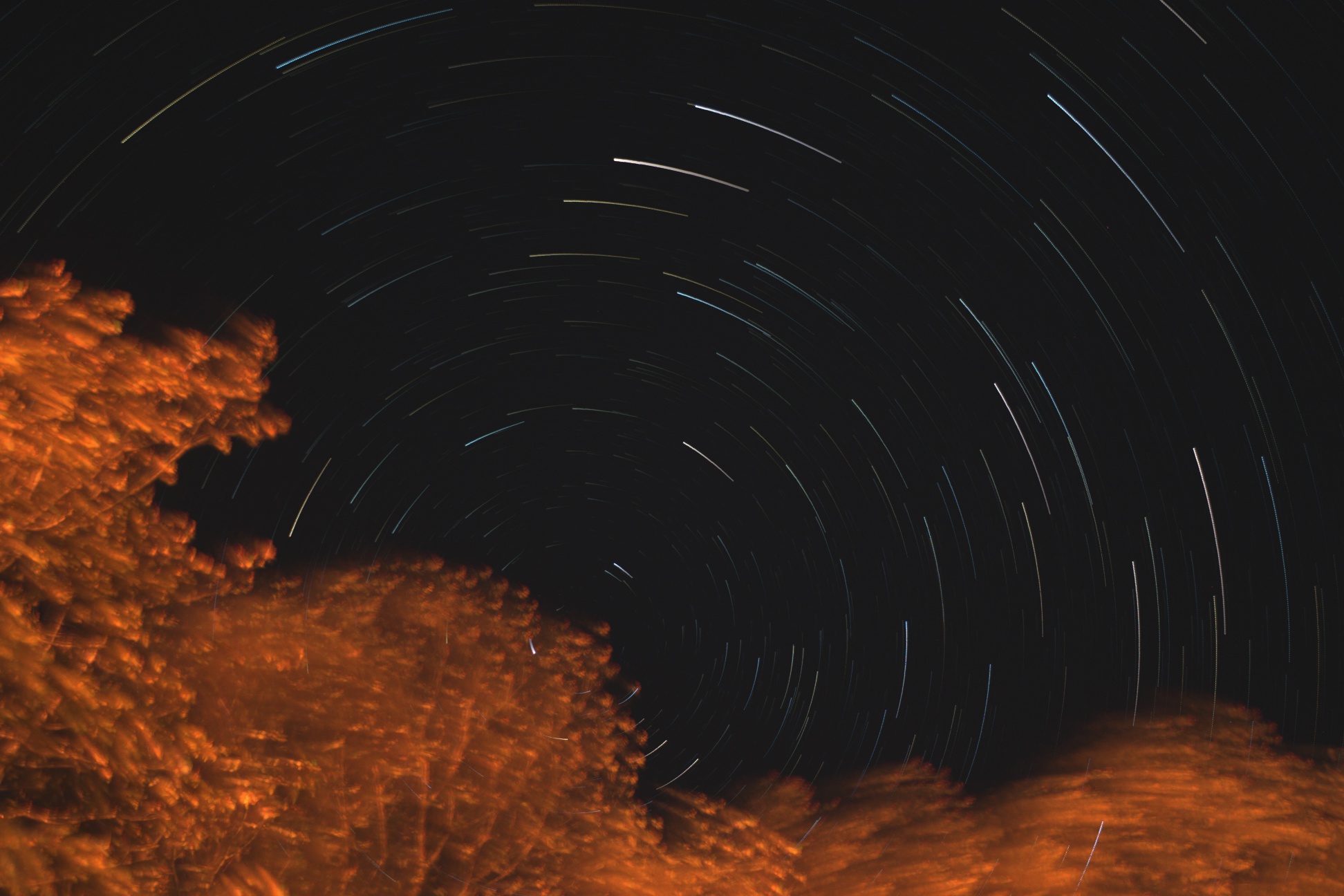„Lift up your eyes to heaven and see. Who has created these things? It is the One who brings out their army by number; He calls them all by name. Because of his vast dynamic energy and his awe-inspiring power, Not one of them is missing (…)”
Middle Eastern poem about the stars, 8th century BCE
Our recent pictures
North America & Pelican nebulae
NGC 7000 / Caldwell 2 & IC 5070 & IC 5067
The North America Nebula is huge; when viewed from Earth it is over 10 times the area of the full Moon. The actual diamater is about 90 light-years and our distance from it is around 2,590 light-years.
M3
NGC 5272
The M3 globular cluster is one of the largest and brightest in the Milky Way. This ancient, 11.4 billion years old cluster is made up of half a million stars and thousands are visible in this picture. It is located 32,600 light-years away from Earth and is quite isolated from the rest of our galaxy because it is ~40° above the galactic plane.
The Eyes
NGC 4435 & NGC 4438 / Arp 120 and asteroids!
NGC 4435 is a barred lenticular galaxy currently colliding with NGC 4438. Both are about 52 million light-years away. There are 3 interesting trails visible in the image below. These belong to a minor planet and two asteroids. Can you find them? Only a handful of people have ever seen any of these objects!
Etcetera
Assorted throwaway pancakes
More often than not astrophotos don’t come out the way you planned them to. There are about 200 steps involved in taking a picture, and they all have to be right. Also, often we need to experiment, finetune equipment or the sky is not good enough for long enough to finish a project. These are some examples of failures and experiments.
Horsehead Nebula
Barnard 33
Horsehead Nebula in Orion, 1,375 light-years from Earth. The brightest star in field of view is the triple star Alnitak (ζ Orionis). That is, three stars orbiting one another in a complicated dance. One of the companions is even visible in the picture.
Articles
How do we take astrophotos?
What kind of equipment is needed to take these pictures
People keep asking us if these pictures are made by us. They are. Really. This is the equipment we use.
Etcetera
Assorted throwaway pancakes
More often than not astrophotos don’t come out the way you planned them to. There are about 200 steps involved in taking a picture, and they all have to be right. Also, often we need to experiment, finetune equipment or the sky is not good enough for long enough to finish a project. These are some examples of failures and experiments.
Star trails
Around the Polaris region
66 minutes of the Earth rotating around its axis.












